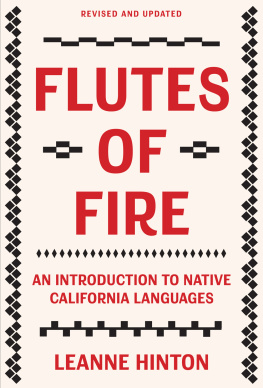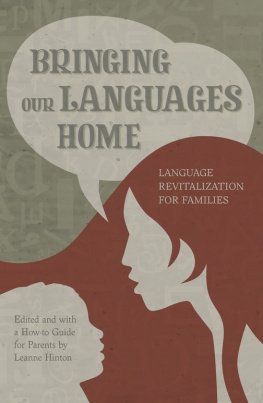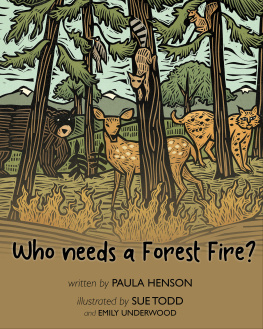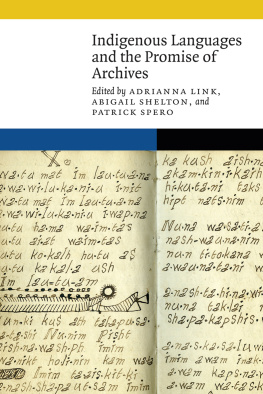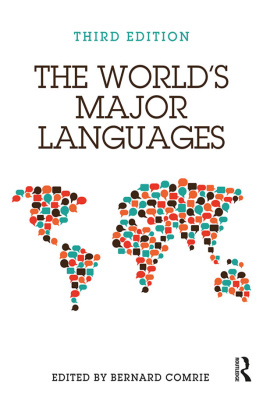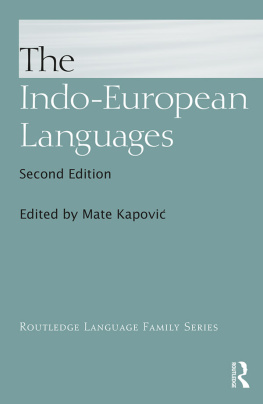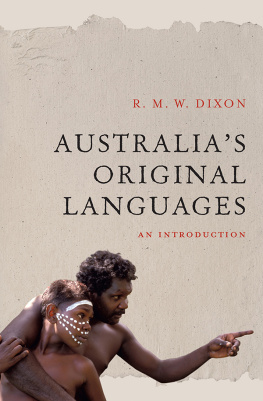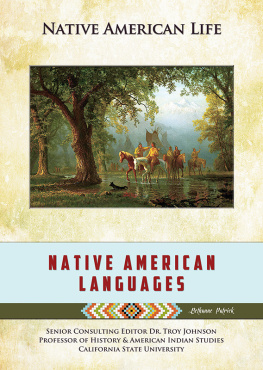Contents
Guide

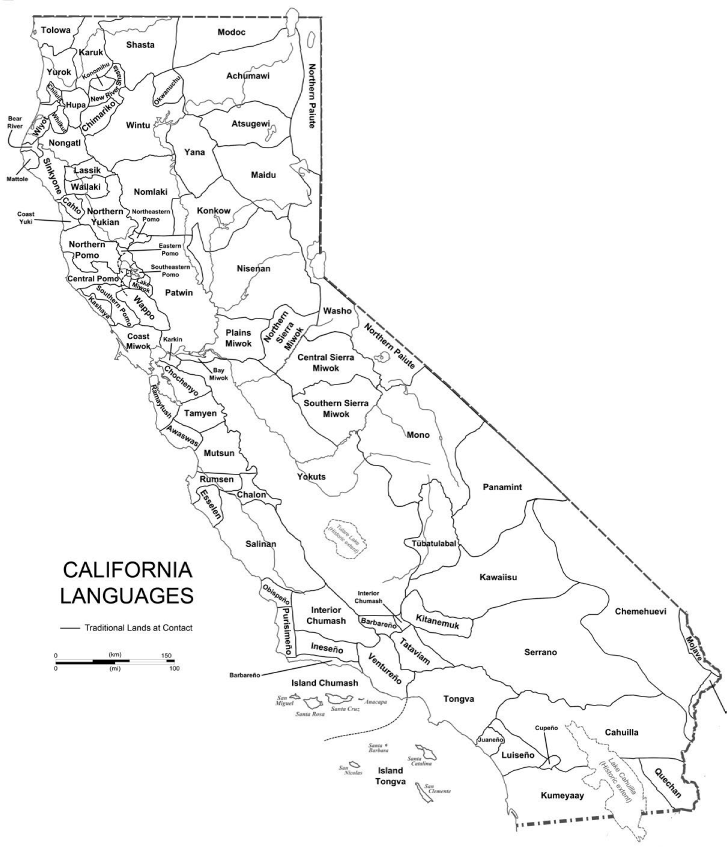
Adapted from a map of California Languages by Hannah Haynie and Maziar Toosarvandani, Survey of California and Other Indian Languages, University of California, Berkeley.

Copyright 2022 by Leanne Hinton
Original edition copyright 1994 by Leanne Hinton
All rights reserved. No portion of this work may be reproduced or transmitted in any form or by any means, electronic or mechanical, including photocopying and recording, or by any information storage or retrieval system, without permission in writing from Heyday.
All reasonable attempts were made to locate the copywright holders for the material published in this book. If you believe you may be one of them, please contact Heyday and the publisher will include appropriate acknowledgment in subsequent editions of the book.
Library of Congress Cataloging-in-Publication Data
Names: Hinton, Leanne, author.
Title: Flutes of fire : an introduction to Native California languages / Leanne Hinton.
Description: Revised and updated. | Berkeley, Calif. : Heyday, [2022] | Includes bibliographical references and index.
Identifiers: LCCN 2021062549 (print) | LCCN 2021062550 (ebook) | ISBN 9781597145664 (paperback) | ISBN 9781597145695 (epub)
Subjects: LCSH: Indians of North America--California--Languages.
Classification: LCC PM501.C2 H56 2022 (print) | LCC PM501.C2 (ebook) | DDC 497/.5--dc23/eng/20220215
LC record available at https://lccn.loc.gov/2021062549
LC ebook record available at https://lccn.loc.gov/2021062550
Cover Art and Front Cover Design: Ashley Ingram
Back cover illustration: Ashley Ingram and Marlon Rigel
Dedication Photographer: Jean Melesaine, portrait of L. Frank
Interior Design and Typesetting: Tima Lotah Link
Published by Heyday
P.O. Box 9145, Berkeley, California 94709
(510) 549-3564
heydaybooks.com
10 9 8 7 6 5 4 3 2 1
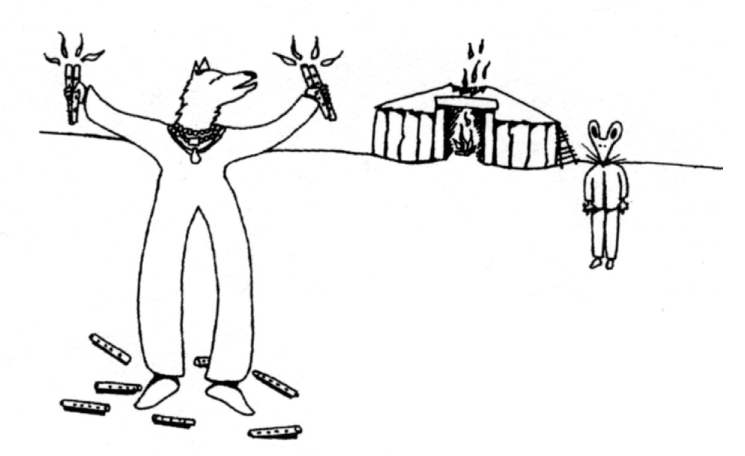
Flutes of Fire.
L. Frank
Tongva/Ajachmem/Rarmuri
A rrived home, Mouse sat on top of the assembly house, playing his flutes and dropping coals through the smokehole. Coyote interrupted him, however, before he was finished, and so it is that the people who sat in the middle of the house received fire. Those people now cook their food and talk correctly. The people who sat around the edge of the room did not get any fire and today when they talk their teeth chatter with the cold. That is the way the languages began. If Coyote had not interrupted and Mouse had been able to finish playing all his flutes of fire, everyone would have received a share of fire and all would have spoken one language.
Indians today talk many different languages for the reason that all did not receive an equal share of fire.
a Maidu creation story in Edward W. Gifford and Gwendoline Harris Block, Californian Indian Nights, p. 136


To the elders of Native California,
past, present, and future
In helping to preserve and restore the languages of California, we are creating something within the larger American community as well; we are helping to change our nations viewpoint toward an acceptance of cultural and linguistic pluralismtoward a sense of unity and diversity. We are helping our state develop joy in the infinite mosaicthe complex pattern of languages and cultures that has always been the human pattern of California.
Contents

As in many things Californian, the superlative applies to the number of languages spoken within the borders of the state in aboriginal times. One hundred and four languages and dialects were spoken by the [Indigenous peoples] of the state when Caucasians first settled within its boundaries. This vast aggregation of languages within so limited an area is not found anywhere else in the world.
Gifford and Block, Californian Indian Nights, p. 15
INTRODUCTION

The California Mosaic
CALIFORNIA TODAY IS A MOSAIC of overlapping cultures; there are practices performed and words uttered every moment of every day from Africa, Asia, Latin America, Polynesia, the Middle East, and of course dominantly from Europe.
Embedded in this complex pattern of people and traditions and ways of thought are the states First Peoples, the many communities of California Indians. Before the rest of the world arrived here, Native California was already one of the most diverse areas on Earth, culturally and linguistically, and it had been for thousands of years. Estimates of how many languages were spoken here range from eighty to over one hundred, together representing five major language families and various smaller families and linguistic isolates.
In this land of rich and varied resources, people could maintain healthy populations and lead very different sorts of lives from other groups. People along the coast had access to fish, shellfish, and nutritious aquatic plants; some went out in boats to hunt the great sea mammals. A few miles inland were those whose staples were the acorn and pine nut. Along the major river systemsthe Sacramento, San Joaquin, Klamath, and Eeland their tributaries, people could fish for the abundant salmon, while their upslope neighbors hunted deer, pronghorn, or mountain sheep. Everywhere, people tended the local useful plants. Ways of living varied, but because different groups of people were geographically close to each other, they could interact often and develop close trading relationships and ceremonial ties. Because of these interactions, people were often multilingual, but each community could nevertheless stay independent enough to maintain its own variety of speech.
Even today, there are many California Indian languages still alive in their communities, each with its own particular genius. There is a great deal to learn from all these different languages, especially about the amazing choices humans have in organizing and talking about the world around them. There are so many ways to construct language itself, many ways to play with it or use it to powerful effect. The elders who speak these languages have so much to tell us about the vocabulary of different kinds of knowledge and activities, about the worldviews expressed in the way utterances are put together, about the infinite number of ways people have of constructing their lives. At a time when these languages (along with over half of the languages in the rest of the world!) are endangered, it is more important than ever to learn the lessons they can teach us.

